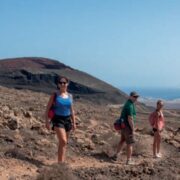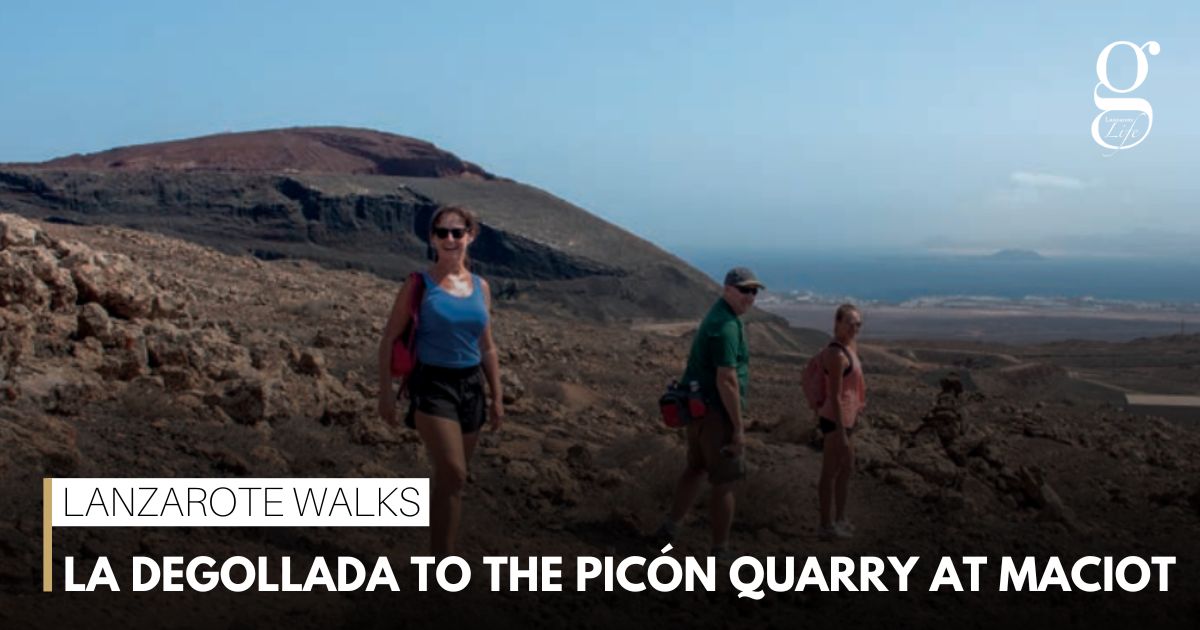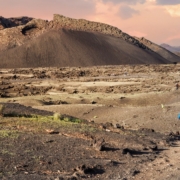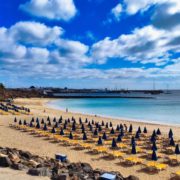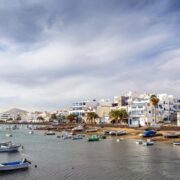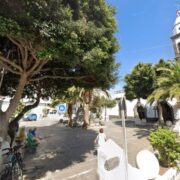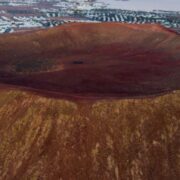Tour guide David Penney takes us on a short but stunning walk through the ancient hills that separate Yaiza from the southern plain of Lanzarote.
To get to La Degollada, take the road through the centre of the village of Yaiza and turn opposite BAR STOP, the well-known establishment where the locals get their cheap tapas and drinks. Drive up the hill past the cemetery on the outskirts of Yaiza and continue to the top where you will see a large slab of concrete on the right of the road which is used for parking, opposite the Canarian bowls pitch in the small hamlet of La Degollada.
To start the walk continue along the road for several metres and then the road becomes a track, as you are walking south west towards the ocean you will see the track splits but you need to take the higher route to the left.
You can stop as often as you like to admire the incredible views. The protected National Park area of Timanfaya is behind you and, as we had a day of good visibility, we were fortunate to see the amazing contours of the numerous volcanoes in the distance.
From the track you also get an elevated view down to Las Salinas de 2anubio (the salt pans) and the large lagoon of sea water. I often joke with my American friends and tell them this is where we grow the salt to put it in the ocean to make the water salty.
All along the rocky track you will see evidence of when this area was used for farming. The terraces have long been abandoned and there hasn’t been any farming carried out for many decades. The heavy rains have run down from the hillside to our left and has destroyed many of the terraces, but you can see rich fertile soil in places where the rain has created mini barrancos or water runs.
After about half an hour of walking you will see the town of Playa Blanca appear in front of you, with Montaña Roja in the distance.
As you look out across the ocean you will see Isla de Lobos and Fuerteventura. I always describe Isla de Lobos as looking like an upturned spoon, and beyond it we got a clear view across the water to see Corralejo’s Grandes Playas (miles of sandy beaches and dunes.)
As we continue along the track we will see the antennas of Atalaya de Femés to our left.
This is the highest point in the south of the island (60 m) and is part of the protected park area called Los Ajaches. The volcano Atalaya de Femés is the second-highest volcano on Lanzarote and one of the oldest on Lanzarote. Atalaya means “lookout”, and these hills were used by the locals to look out for pirates out on the sea.
As we continue down the track, we can’t miss the vivid red of the picón quarry on our left. This is a very well-known landmark which is spotted by all of the traffic which drives up over the mountain road through the village of Femés. Picón is volcanic gravel which is still extracted from this quarry and used by the farmers to irrigate their fields, as it is porous and absorbs the humidity to grow their vegetables. It is also used by the local authorities as decorative material on the flower beds and roundabouts. More usually black, the red picón here is rich in iron oxidation, and I understand it is protected under licence and cannot be exported from Lanzarote.
After a juice stop and a snack, we set off back up the same track which we take all the way back to the car. It takes about an hour. As you drive out of the village of La Degollada there is a fantastic new BBQ and picnic area on the left, which is one of the best on the island. It is set amongst the trees and has all new grilles and benches which have horseshoe shaped walls to protect you from the wind.
We all agreed that we wanted the reward of a nice cold beer/drink after a hot couple of hours of walking so we drove back to the café bar next to the supermarket in Yaiza, where Tina the owner gave us some free snacks.
WALK INFORMATION
This is a circular 6km walk which should take you 2 hours to complete. The terrain is a non-challenging, rocky path.
Take sun protection and some water. This walk is best on days with good visibility.
For regular updates, pictures and videos of Lanzarote be sure to like and follow our Facebook page “Gazette Life Lanzarote”.

